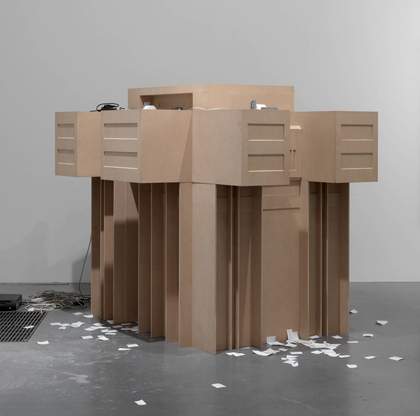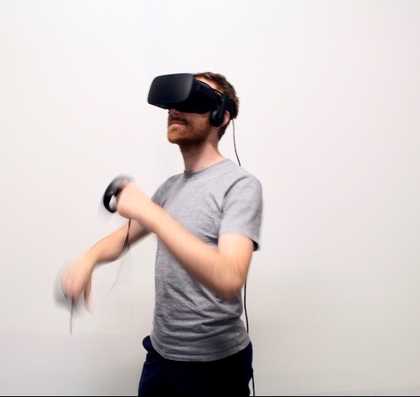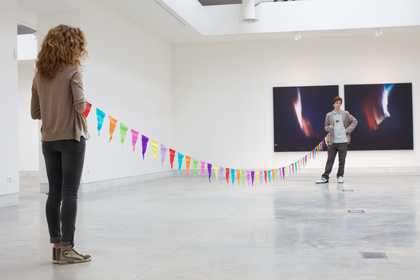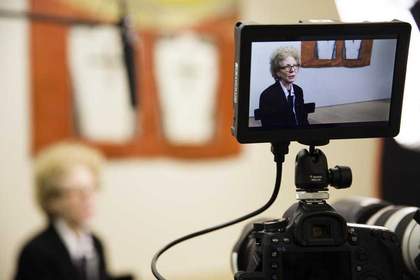
Time-based media conservation technicians checking the alignment of an LCD projector
Our collection of time-based media art spans from the 1960s to the present day. It includes artworks that use video, film, audio, 35 mm slide and computer-based technologies, and focuses mainly on artists’ installations, rather than single-channel works.
Artists make very precise decisions in their choice of media and the way in which their work is presented. Specific display equipment might be important because of a particular quality of sound or image it creates, or because the artist has made conceptual links between a particular item of equipment and the meaning of the work. Specific technology places a work at a particular point in history and may convey ideas about the spirit in which the work was made.
Our duties
- Identify and assess risks to artworks from agents of deterioration and change
- Manage the inevitable changes that come with a fast-changing technological environment; the stronger the link between the meaning of a work and a particular technology the greater the loss can be
- Devise a preservation strategy is designed for each artwork, based on how each work was made and what is important to its ongoing preservation and display
- Produce display copies for installations in order to ensure the long term preservation of the master materials
- Work closely with the artist and/or their assistant when their work is acquired into the collection and when it is installed into the gallery
Challenges we face
- Industry decisions to discontinue particular technologies (a projector or tape format, for example) means that we must ensure that encoded media can be played back
- Time-based media installations form are complex, if one part breaks down or can no longer be supported, this usually has ramifications for the whole
- Processes have to be recreated each time the work is installed due to changes in location and environment




